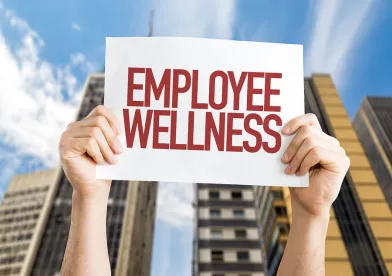The coronavirus, and the illness caused by the coronavirus, COVID-19, are dominating headlines, stock markets and daily conversation. They are also raising many questions—and employers in the U.S. are facing one such critical question: How do we help ensure the health and safety of our employees? Squire Patton Boggs helps provide some answers below.
Employer Duties
Nearly all employers in the U.S. have a statutory duty to comply with occupational safety and health standards promulgated by the U.S. Department of Labor, Occupational Safety and Health Administration (OSHA).[1] Therefore, it is important for employers to know and understand what specific OSHA standards may be implicated by and apply to the coronavirus.
In addition, nearly all employers in the U.S. have a statutory duty to “furnish to each of his employees employment and a place of employment which are free from recognized hazards that are causing or are likely to cause death or serious physical harm to his employees.”[2] As the coronavirus spreads, and invariably becomes more of a recognized hazard in the workplace every day, employers should evaluate their current health and safety protocols and implement additional best practices, as needed, to help ensure a safe work environment.
Occupational Safety and Health Standards
OSHA does not have a standard specific for the coronavirus or COVID-19. However, per agency comments thus far, it is possible that OSHA could attempt to use and enforce a variety of current OSHA standards to the extent that coronavirus presents an occupational exposure risk. Thus, employers should be aware of and familiarize themselves with the following OSHA standards:
-
The General Duty (referenced above) to provide a workplace free from recognized hazards. This standard requires employers to take reasonable steps to ensure a safe and healthy work environment. Such reasonable steps could include providing information regarding coronavirus and COVID-19 to employees, developing a safety and health policy, communicating and training employees on the policy, and enforcing that policy.
-
Personal Protective Equipment (PPE) standards, which generally require the use of gloves, eye and face protection and respiratory protection.[3] When respiratory protection is necessary, employers must implement a comprehensive respiratory protection program in accordance with the Respiratory Protection standard.[4] The Respiratory Protection standard is technical and should be evaluated on a case-by-case basis.
-
Recordkeeping standards require covered employers to record certain work-related injuries and illnesses.[5] While the common cold and flu are not required to be recorded,[6] OSHA’s current position is that COVID-19 is required to be recorded when an employee is infected with coronavirus and falls ill in the course of employment.
-
General Environmental Control standards cover specific requirements for workplace sanitation, including general housekeeping, waste disposal and washing facilities.[7]
-
The Bloodborne Pathogens standard applies to occupational exposure to human blood.[8] While the coronavirus is not presently known to be transmitted through bloodborne pathogens, OSHA advises that this standard could still provide a framework for controlling coronavirus exposure to the extent transmitted via bodily fluids more generally.
Lastly, employers that operate in U.S. states with OSHA-approved “State Plans” should also be aware of and familiarize themselves with state-specific standards. In many instances, a State Plan will mirror federal OSHA standards; but some states have promulgated and implemented more stringent standards and requirements.
Best Practices
In addition to complying with applicable and relevant OSHA standards, employers should also evaluate their current health and safety plans. It is critical for employers to have the proper and necessary processes and procedures in place to help mitigate employee exposure to coronavirus and to conduct training to ensure compliance. To that end, provided below are a number of best practices that employers may want to consider implementing in their businesses, as appropriate.
-
Develop and/or update a business continuity plan to ensure that operations do not come to a complete halt. Such a plan can address technology needs for working remotely, instituting a hierarchical communication protocol and identifying specific individuals (and back-ups) with specific responsibilities during interrupted operations (i.e., mail/deliveries, records management, etc.).
-
Limit business travel to only necessary and essential travel. Where possible, conduct meetings and presentations using videoconferencing technology. Also, strictly prohibit business travel to locations known to have a risk of coronavirus exposure. The Centers for Disease Control and Prevention (CDC) has advised against non-essential travel to China, South Korea, Italy and other countries, and has recommended enhanced precautions against travel to certain other countries, including Japan.
-
Where possible, allow employees to work from home, and encourage employees to stay at home if they do not feel well. Provide employees with the flexibility to tend to their personal health and well-being. Encourage employees to take their work-provided laptops home with them nightly, in case of any unforeseen office closures. Talk to your employees about any equipment or supplies they may need in order for them to effectively carry out their jobs remotely.
-
Encourage employees to regularly wash their hands with an alcohol-based hand rub or soap and water. Post signs throughout the workplace with reminders of proper hygiene, including avoiding touching eyes, nose and mouth, covering your nose and mouth with your bent elbow or a tissue when you cough or sneeze, and immediately disposing of used tissues.
-
Consider adjusting processes and procedures to help avoid non-essential close contact between employees while they are performing day-to-day job duties. Reinforce a policy of maintaining at least a three-foot distance from anyone who is coughing or sneezing.
-
Regularly clean and/or disinfect the workplace, particularly high-traffic areas. Provide hand sanitizer in conspicuous locations, and encourage employees and office visitors to use it regularly.
-
Communicate with employees, clients, vendors and other third-parties. Let all of your stakeholders know what you are doing to help prevent exposure to the coronavirus. Also consider staying in close contact with your local health officials.
-
Make sure your most current safety and health plans and policies are communicated to employees and are easily accessible. Consider creating a single source of all relevant information and materials, whether a webpage, app or internal shared drive. Also consider mandating training courses on your current safety and health policies, as well as training courses on any new policies that may be implemented as a result of coronavirus and COVID-19.
-
Review your current and in-force insurance policies and programs to evaluate the proper level(s) and need(s) of insurance coverage.
-
Stay up-to-date on the latest official news, information and alerts regarding coronavirus and COVID-19. The CDC has a website dedicated to coronavirus, and employers should visit it often. The World Health Organization also provides regular updates.
Conclusion
The coronavirus poses a fluid and rapidly evolving situation. However, employers in the U.S. can and should be doing all that they can now, and minute-by-minute, to help ensure the health and safety of their employees.
- [1] See 29 U.S.C. § 654.
- [2] Id.
- [3] See 29 C.F.R. § 1910, Subpart I.
- [4] See 29 C.F.R. § 1910.134.
- [5] See 29 C.F.R. Part 1904.
- [6] See 29 C.F.R. § 1904.5(b)(2)(viii).
- [7] See 29 C.F.R. § 1910.141.
- [8] See 29 C.F.R. § 1910.1030.







 />i
/>i
